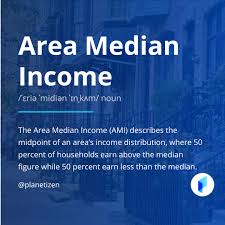The growing popularity of stablecoins has redefined the way we view digital assets. While the crypto world is known for volatility, stablecoins offer a sense of security, making them ideal for transactions, remittances, and hedging. In this article, we’ll explore the list of stablecoins dominating the market in 2025—USD-pegged, algorithmic, and commodity-backed—and provide a comprehensive understanding of how each type works, their benefits, and which ones are considered the safest.
Whether you’re a seasoned trader or a curious beginner, understanding the list of stablecoins can give you an edge in the fast-evolving financial landscape.
What Are Stablecoins?
Stablecoins are cryptocurrencies designed to maintain a stable value, typically by being pegged to a reserve asset such as the US dollar, euro, or even gold. Unlike Bitcoin or Ethereum, which can swing wildly in price, stablecoins remain consistent, which makes them useful for:
- Everyday transactions
- DeFi (Decentralized Finance) activities
- Lending and borrowing
- Cross-border payments
- Hedging against market volatility
As of 2025, the list of stablecoins has expanded significantly, with hundreds of options across different blockchains.
Types of Stablecoins
Before diving into the full list of stablecoins, it’s important to understand the three primary types:
1. Fiat-Collateralized Stablecoins
These are backed by fiat currencies like USD or EUR held in reserve.
- Pros: High stability, widely accepted
- Cons: Centralized, subject to regulation
2. Crypto-Collateralized Stablecoins
These are backed by other cryptocurrencies.
- Pros: Decentralized, more transparent
- Cons: Over-collateralized, complex
3. Algorithmic Stablecoins
These use algorithms and smart contracts to maintain price stability.
- Pros: Fully decentralized
- Cons: Risk of collapse during market volatility
Understanding these categories helps you navigate the ever-growing list of stablecoins more effectively.
Top Fiat-Backed Stablecoins (USD-Pegged)
Here’s a breakdown of the most reliable USD-pegged stablecoins as of 2025:
1. Tether (USDT)
- Market Cap: Over $100 billion
- Blockchain: Ethereum, Tron, Solana, and others
- Use Case: Trading, remittances, and DeFi
Tether continues to lead the list of stablecoins with the largest market cap. Despite regulatory scrutiny, it remains widely used across exchanges.
2. USD Coin (USDC)
- Issuer: Circle
- Market Cap: $70+ billion
- Compliance: Regularly audited reserves
- Best For: Users concerned with transparency
USDC is often seen as the most trustworthy option in the list of stablecoins due to its fully-backed reserves and regulatory compliance.
3. PayPal USD (PYUSD)
- Launched: 2023
- Issuer: Paxos Trust Company
- Purpose: Seamless payments via PayPal ecosystem
Though newer, PYUSD is gaining traction and deserves a spot on any credible list of stablecoins.
4. Binance USD (BUSD) – [Phased Out in 2024]
While BUSD was once among the top players in the list of stablecoins, it was discontinued in 2024 due to regulatory pressure. Existing holders converted to other assets.
Top Algorithmic Stablecoins
Algorithmic coins are a growing but risky segment in the list of stablecoins.
1. Frax (FRAX)
- Mechanism: Partially backed + algorithmic
- Stability: Maintained through collateral ratios
- Use: DeFi protocols and liquidity pools
Frax is a hybrid, making it a unique addition to the list of stablecoins for users seeking decentralized options.
2. Ampleforth (AMPL)
- Function: Elastic supply to stabilize price
- Volatility: High, due to rebase mechanism
AMPL offers an experimental twist in the list of stablecoins but isn’t suitable for users needing fixed purchasing power.
Crypto-Collateralized Stablecoins
These coins rely on locking other cryptocurrencies as collateral.
1. Dai (DAI)
- Issuer: MakerDAO
- Collateral: ETH, USDC, and others
- Blockchain: Ethereum
DAI is the most well-known decentralized option in the list of stablecoins. It’s fully autonomous and transparent.
2. sUSD (Synthetix USD)
- Platform: Synthetix Network
- Purpose: Synthetic asset creation
Though not as popular as DAI, sUSD plays a crucial role in DeFi trading and belongs in the list of stablecoins for power users.
Commodity-Backed Stablecoins
These stablecoins are pegged to physical assets like gold or silver.
1. PAX Gold (PAXG)
- Backed By: Physical gold stored in London vaults
- Issuer: Paxos
- Benefits: Combines crypto utility with gold’s stability
PAXG adds diversity to the list of stablecoins, attracting investors wanting tangible backing.
2. Tether Gold (XAUT)
- Backed By: Gold
- Issuer: Tether
- Transparency: Less than PAXG
Although part of the extended list of stablecoins, XAUT has faced criticism due to limited auditing.
Why the List of Stablecoins Keeps Growing
The continued expansion of the list of stablecoins is driven by:
- Rising demand for crypto payments
- Volatility hedging in DeFi
- Regulatory pressure forcing innovation
- Cross-border remittance needs
Stablecoins bridge the gap between traditional finance and blockchain technology.
How to Choose From the List of Stablecoins
Here’s a checklist to help you decide which stablecoin to use:
| Criteria | Explanation |
|---|---|
| Regulation | Is the coin issued by a regulated entity? |
| Transparency | Are reserves independently audited? |
| Blockchain Support | Is it available on multiple networks? |
| Use Case | Trading, payments, lending, or saving? |
| Liquidity | Can you easily convert it into fiat or crypto? |
Use this guide to navigate the expanding list of stablecoins and choose what suits your needs best.
Risks Involved With Stablecoins
Even though stablecoins are, by definition, “stable,” they’re not risk-free. Here are the common risks associated with the list of stablecoins:
- Regulatory clampdowns (e.g., BUSD phaseout)
- De-pegging events (e.g., TerraUSD collapse)
- Centralization risks with fiat-backed options
- Lack of transparency
Thus, users should always conduct due diligence before using any asset from the list of stablecoins.
Stablecoins & Regulation in 2025
Government agencies worldwide are now focusing on stablecoins. In the U.S., the Stablecoin TRUST Act of 2024 brought:
- Mandatory disclosures
- FDIC-style insurance for certain issuers
- Clear rules for algorithmic coins
This regulatory clarity will continue shaping the list of stablecoins by filtering out non-compliant projects.
Future Trends in the List of Stablecoins
Here’s what to expect in the next 12–24 months:
- More Central Bank Digital Currencies (CBDCs) joining the ecosystem
- Rise of Euro and Yen-backed stablecoins
- Decentralized stablecoin innovation
- Stablecoins integrated in AI-based finance apps
The list of stablecoins will evolve, becoming more diversified, regulated, and embedded in everyday financial tools.
Final Thoughts
The list of stablecoins in 2025 is vast, diverse, and rapidly evolving. From heavyweights like USDT and USDC to algorithmic experiments like FRAX and sUSD, there’s something for every crypto user.
Stablecoins are more than just a store of value—they are the backbone of the decentralized economy, enabling billions in daily transactions. Whether you’re using them for yield farming, hedging, or saving, understanding this list of stablecoins gives you a competitive advantage.
Always stay updated, evaluate risks, and choose stablecoins that align with your values and financial goals.
FAQs About the List of Stablecoins
Q1: What is the safest stablecoin in 2025?
A: USDC is widely considered the safest due to audited reserves and regulatory compliance.
Q2: Are stablecoins really stable?
A: Most are, especially fiat-backed ones, but algorithmic stablecoins can de-peg during extreme volatility.
Q3: Can I earn interest on stablecoins?
A: Yes, many platforms offer 4%–10% APY on assets from the list of stablecoins.
Q4: Which stablecoin should beginners use?
A: USDC or USDT are ideal due to wide acceptance and liquidity.
Q5: Will stablecoins replace traditional currencies?
A: Not entirely, but they are becoming key tools in the global digital economy.





























